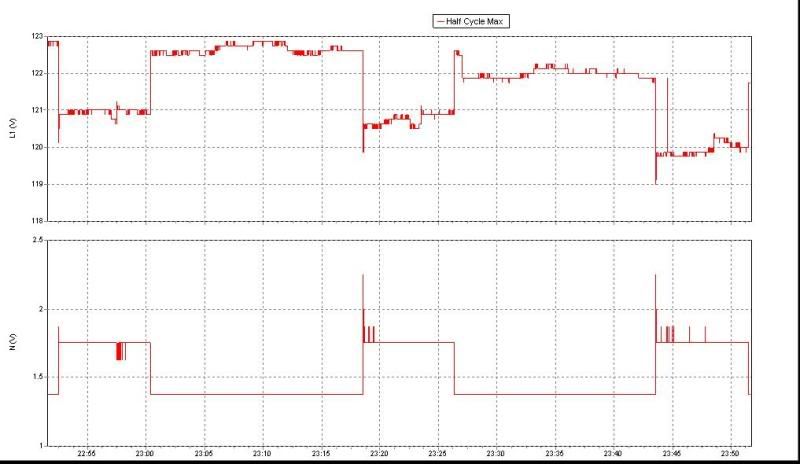gar
Senior Member
- Location
- Ann Arbor, Michigan
- Occupation
- EE
090406-1822 EST
mivey:
We do not have any heavy industry in town. That requires going 30 to 40 miles away. Those sites being Great Lakes Steel, Rouge Steel, and the Ford Rouge plant. These are much closer to the main power plants. Most auto plants do not have large on-off loads.
I have not seen the on-off cycling since Saturday. That this occurred over several hours, has not since, and occurred on Saturday implies a desire by somebody to do some high load testing at a non-peak time, if it is further away than my neighborhood, and was load generated. My shop is 2 miles away and I know the location of its substation, and that one does not service my home.
Today the voltage variation has been greater than before. The 1 minute average values have ranged from near 122.0 to 124.0 . The fluorescent lights flickered once today and I looked at the 1 second average plot and this corresponded to a 6 V momentary dip. It actually could have been greater but shorter than 1 second. We had a snow storm starting last night and there were 90,000 customers of DTE without power today. So it makes sense that voltage has been jumping around. I suppose that the variations I am seeing seem small to some in other parts of the country.
If I had a monitoring system at the shop, then I could correlate home data with shop data and from this separate system wide variations from local ones.
.
mivey:
We do not have any heavy industry in town. That requires going 30 to 40 miles away. Those sites being Great Lakes Steel, Rouge Steel, and the Ford Rouge plant. These are much closer to the main power plants. Most auto plants do not have large on-off loads.
I have not seen the on-off cycling since Saturday. That this occurred over several hours, has not since, and occurred on Saturday implies a desire by somebody to do some high load testing at a non-peak time, if it is further away than my neighborhood, and was load generated. My shop is 2 miles away and I know the location of its substation, and that one does not service my home.
Today the voltage variation has been greater than before. The 1 minute average values have ranged from near 122.0 to 124.0 . The fluorescent lights flickered once today and I looked at the 1 second average plot and this corresponded to a 6 V momentary dip. It actually could have been greater but shorter than 1 second. We had a snow storm starting last night and there were 90,000 customers of DTE without power today. So it makes sense that voltage has been jumping around. I suppose that the variations I am seeing seem small to some in other parts of the country.
If I had a monitoring system at the shop, then I could correlate home data with shop data and from this separate system wide variations from local ones.
.

